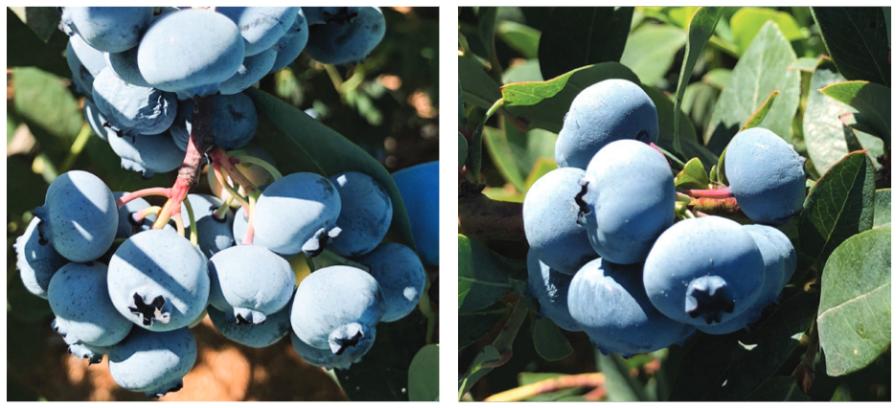How This Novel Deterrent for Spotted Wing Drosophila Works
More than 11 years into his research on spotted wing drosophila (SWD), Vaughn Walton is anything but content. In fact, he expects the next three years to be some of the most thrilling of his career.
Walton and Gabriella Tait, his colleague in the Department of Horticulture at Oregon State University, have enjoyed success thus far in their development of a novel deterrent against SWD. The goal of their research is to discover new formulations that do not negatively affect the visual and taste aspects of fruit — berries in this case — but still protect against the flies.
So far, so good, with more testing planned, of course.
“We’re quite excited about this,” Walton said at the annual meeting of the North American Raspberry and Blackberry Association (NARBA). “It’s going to take a little while before this could be registered. It does take some time, especially if you’re doing a direct application on the berries. But we hope that in not more than three or four more years or so this will be available to growers.”
REDUCING RESIDUE
SWD, or Drosophila suzukii, is an insect pest of economically valuable small fruit and tree fruit crops. Recognized first on the U.S. mainland in California in 2008, and a year later in Oregon and the Pacific Northwest, the species now appears to be established in many fruit-growing regions across the U.S.
Walton and Tait hope to use their deterrent as an added tool to manage SWD. Similar types of deterrents, used over thousands of years, Walton said, have included tobacco and other botanicals, soap suds, and fish and whale oil, or dormant oil. Other treatments have included dusts, clays, charcoal, soot, sulfur, ground tobacco, lime powder, and Plaster of Paris.
Unfortunately, each of those compounds negatively impacts the aesthetics of the fruit — an outcome all too familiar to Walton.
“When we started doing this work, as early as 2017, we came up with formulations that provided very, very good control, up to 60% and sometimes higher,” he said. “However, when you treat the fruit, you can see quite a lot of residue on the fruit. In some fruit, such as apples, you can wash those. However, when you look at small fruit, you don’t always have the opportunity to wash the fruit.”
Historically, typical treatment applications have revolved around rates of 2% to 3% of volume to volume (v/v) when mixed with water.
“We wanted to get that rate much, much lower,” Walton said, “ending up with a formulation that looked much closer to an untreated control.”

Untreated berries (left) and berries treated with a formulation under development bear no visual differences in the field. There are “very, very little” field residues of any kind to be found, Vaughn Walton says.
Photo courtesy of Oregon State University
TEST RESULTS
Walton and Tait started with a 0.6% v/v formulation in the laboratory in early 2020. In June their tests moved outdoors, where the same formulation was used on flies that had been placed inside bags. In this case, three treatment types — control, deterrent, and deterrent plus water (simulated rain) — were evaluated at one, four, and seven days after treatment.
“That early (0.6%) formulation resulted in a reduction but a non-significant reduction in egg laying — about a 20% to 30% reduction, which, in this case, I don’t think was acceptable,” Walton said. “So, we had to go back to the drawing board to try to figure out if we could find a different formulation that resulted in similar levels of control as we had seen in those higher rates in (the indoor trial).”
Walton and Tait changed their formulations. They looked at other ingredients, most of which were plant based but in some cases were refined clays, such as Surround (kaolin, NovaSource).
When they returned to the field in August, they did so with a v/v formulation of 0.076% that had looked “really promising” in the lab, Walton said. And despite that rate being nearly 10 times lower, the outcome was a success — more than 50% reduction one day after application and just under 50% reduction four days after application.
“What we’re seeing very often is that sometimes at a lower rate, as opposed to a higher rate, you actually get a benefit,” Walton said. “This is the formulation that I’d like us to look at and refine in the next year or so.”
EYE/TASTE TESTS
Lab examinations with a microscope under artificial light showed no visual differences between untreated and treated fruit, Walton said. Regarding taste, no differences were noticed by anyone, he added, including growers and stakeholders.
Talks have begun with organic certifiers, Walton said, noting that the formulations can work at levels comparable to other organic pesticides under open field conditions. “We believe this can be an organic alternative,” he said.
In addition, Walton said he believes that production costs of the fruit could be slightly lower. “This would not be an extremely expensive compound,” he said. “It’s not a perfect compound, but it is providing an alternative way to managing spotted wing drosophila.”










